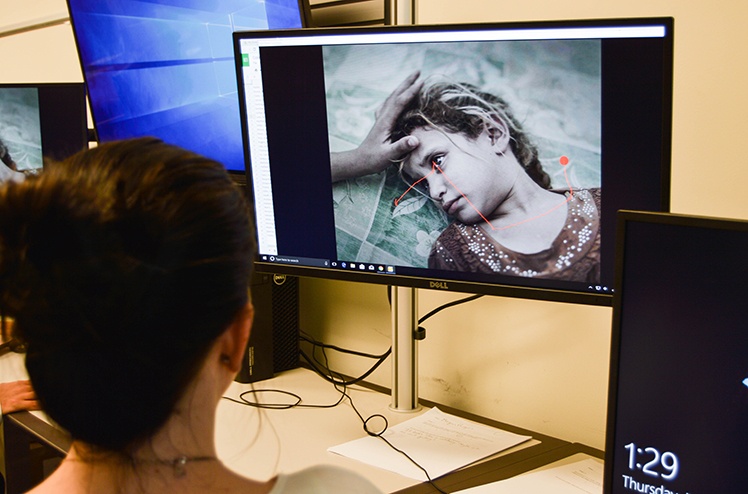Texas A&M Researchers: Eye-Tracking Tech Will Revolutionize How Advertisers Reach Consumers
As society becomes increasingly visual, researchers at Texas A&M University are testing how eye-tracking technology can change the way advertisers and communicators tailor messages to their consumers and audiences.
Tobin Redwine and Billy McKim, professors in the Department of Agricultural Leadership, Education and Communications, say that the goal of visual communicators is to direct their audience to the most important point in everyday items, whether that is advertisements, surveys or social media applications.
“Understanding how people process images, from emojis to infographics, helps us better understand how to craft messages,” Redwine said. “That’s our aim. If you have a more accurate and valid experience any time you check Instagram, read a magazine or fill out a survey, we are removing confusion from your day-to-day life.”
Redwine and McKim enlisted the help of undergraduate and graduate students to test many of the photographic, design and survey principles currently taught in the department’s agricultural communications and journalism classes using their state-of-the-art equipment. For example, photographers are taught the rule of thirds, an approach used when taking pictures to balance a photograph and make it more appealing to viewers.
“We’re teaching students ‘design this way,’ but it’s not based on our research,” McKim said. “If you look at the rule of thirds, we’ve all been taught that that is a key to visual composition. So, we’re going back and not only testing the fundamentals that we’ve traditionally taught in the classroom, but we are making sure our students know it’s important to continue to test those principles.”
The science behind eye-tracking technology involves the use of an infrared ray, bouncing in and out of a person’s eye, to indicate where a participant is looking. By using this technology tied to monitors, the researchers were able to track where participants in their study initially looked at photos and the subsequent path their eyes made as they continued to gaze at the screen. According to the research team, these movements and gaze behavior are indicators of a teachable communication skillset known as visual literacy.
“Just like a writer will develop sentences in order to direct readers to the information that is most important,” Redwine said, “we’re teaching visual communicators to do the same thing.”
Prior to this study, researchers did not have an established method to measure visual literacy, but their preliminary findings validate eye-tracking as a method to investigate this concept. In February, Redwine and McKim will present at the Southern Association of Agricultural Scientists that data generated from the project, including variables like number of eye movements and view duration, form a baseline to which future studies can compare. These findings open the door for future research to design curriculum and identify predictors of visual communication success.
“At the end of the day, our goal is to understand how to design messages for increased information communication and retention,” Redwine said, “and technology is allowing us to do just that.”
###
This story originally appeared on the College of Agriculture & Life Sciences website.





